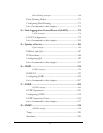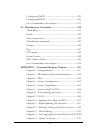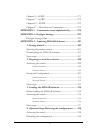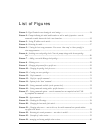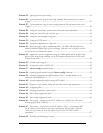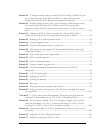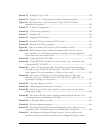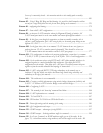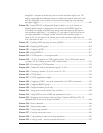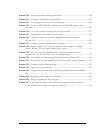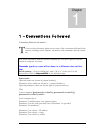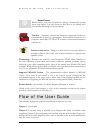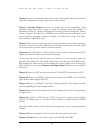
In case of a connectivity break – the connection switches to the standby path or standby
link ........................................................................................................................................169
FIGURE 95 – Using S-Ring, RS-Ring and dual-homing, it is possible to build networks resilient
not only to a single link failure but also for one device failing on the network.............................170
FIGURE 96 – configuring dual-homing ................................................................................................172
FIGURE 97 – Some valid LACP configurations. ................................................................................176
FIGURE 98 – an incorrect LACP connection scheme for Magnum 6K family of switches. All
LACP trunk ports must be on the same module and cannot span different modules..................176
FIGURE 99 – In this figure, even though the connections are from one module to another, this is
still not a valid configuration (for LACP using 4 ports) as the trunk group belongs to two
different VLANs...................................................................................................................177
F
IGURE 100 - In the figure above, there is no common VLAN between the two sets of ports, so
packets from one VLAN to another cannot be forwarded. There should be at least one
VLAN common between the two switches and the LACP port groups. ...................................177
FIGURE 101 – This configuration is similar to the previous configuration, except there is a common
VLAN (VLAN 1) between the two sets of LACP ports. This is a valid configuration. ........178
FIGURE 102 – In the architecture above, using RSTP and LACP allows multiple switches to be
configured together in a meshed redundant link architecture. First define the RSTP
configuration on the switches. Then define the LACP ports. Then finally connect the ports
together to form the meshed redundant link topology as shown above..........................................178
FIGURE 103 – LACP, along with RSTP/STP brings redundancy to the network core or
backbone. Using this reliable core with a dual-homed edge switch brings reliability and
redundancy to the edge of the network.......................................................................................179
FIGURE 104 – This architecture is not recommended............................................................................180
FIGURE 105 – Creating a reliable infrastructure using wireless bridges (between two facilities) and
LACP. “A” indicates a Wi-Fi wireless Bridge or other wireless Bridges..................................181
F
IGURE 106 – Configuring LACP....................................................................................................183
FIGURE 107 – The network for the ‘show lacp’ command listed below..................................................184
FIGURE 108 – LACP information over a network.............................................................................185
FIGURE 109 – ToS and DSCP.........................................................................................................187
FIGURE 110 - IP Precedence ToS Field in an IP Packet Header.........................................................188
FIGURE 111 - Port weight settings and the meaning of the setting .........................................................190
FIGURE 112 – QoS configuration and setup........................................................................................193
FIGURE 113 – IGMP concepts – advantages of using IGMP..............................................................197
FIGURE 114 – IGMP concepts – Isolating multicast traffic in a network.............................................198
FIGURE 115 - In a Layer 2 network, an IGMP multicast traffic goes to all the nodes. In the
figure, T1, a surveillance camera, using multicast, will send the traffic to all the nodes - R1
xv



